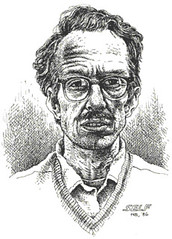 {Texto trilingüe} No tengo una razón definida para haber hecho el Génesis. Es un libro que me atraía y el reto de ilustrarlo me parecía divertido. Todo está en el Génesis, todas las historias de alguna forma u otra están en él. Dibujarlo podía ser una forma de probar mis capacidades. Robert Dennis Crumb. La quasi-totalité de la bande dessinée américaine obéit à des impératifs commerciaux qui ne laissent aux auteurs qu’une marge de manœuvre très réduite, mais il existe, en dehors des éditeurs et diffuseurs traditionnels, une production plus indépendante, généralement très critique à l’égard de la société. Ce courant, déjà sensible dans les années 1952-1956 avec la revue satirique Mad, alors dirigée par Harvey Kurtzman, s’est amplifié dans les années 1960 et 1970 avec le mouvement dit underground (littéralement « souterrain ») qui, en bousculant les tabous de la bande dessinée traditionnelle - par la représentation de la violence et de la sexualité, et par la dérision des institutions - a joué un rôle essentiel dans la remise en cause du système de valeurs des États-Unis. Cette bande dessinée de contestation, sous-tendue par une idéologie libertaire, s’inscrit dans un contexte politique, et il est significatif qu’elle ait connu son apogée dans les années 1965-1975, c’est-à-dire celles de la guerre du Vietnam. Il est également symptomatique que son créateur le plus emblématique, Robert Crumb, ait renoncé à vivre aux États-Unis et habite depuis 1991 dans le midi de la France. Source: Dominique PETITFAUX dans Encyclopædia Universalis 2007. Robert Dennis Crumb (born in Philadelphia August 30, 1943), often credited simply as R. Crumb, is an American artist and illustrator recognized for the distinctive style of his drawings and his critical, satirical, subversive view of the American mainstream. He currently lives in Southern France with his wife Aline Kominsky-Crumb. As a kid, he started drawing homemade comic books, together with his brother Charles, for the amusement of himself and his family. One of the characters he invented back then was Fred the Cat, named after the family's pet. Eventually, Fred became Fritz the Cat, one of Crumb's best-known characters. Crumb was a founder of the underground comix movement and is regarded as its most prominent figure. Though one of the most celebrated of comic book artists, Crumb's entire career has unfolded outside the mainstream comic book publishing industry. One of his most recognized works is the "Keep on Truckin'" comic, which became a widely distributed fixture of pop culture in the 1970s. Others are the characters Devil Girl, Fritz the Cat, and Mr. Natural. He also illustrates album covers, including Cheap Thrills by Big Brother and the Holding Company and the compilation album The Music Never Stopped: Roots of the Grateful Dead. Fritz the Cat a commencé à être publié en 1965 dans le magazine Help ! et s’est terminé en 1972 dans The People’s Comics, l’ensemble représentant un peu moins de 100 pages. À la manière des productions de Walt Disney (qui ont beaucoup marqué Robert Crumb dans son enfance, comme en témoigne son graphisme), il s’agit d’une bande où les humains ont une apparence animale. Le chat Fritz, jeune étudiant naïf et idéaliste dans les premiers récits, devient un militant gauchiste, parasite et conformiste. Déçu par l’adaptation en dessin animé de Ralph Bakshi (1971) et par le monde mercantile du cinéma, Robert Crumb, dans une ultime histoire, fait de son chat une vedette de l’écran ; Fritz, désormais rusé et cynique, est finalement assassiné par une ancienne compagne, une femme-autruche frustrée, qui le tue à coups de pic à glace (telle vingt ans plus tard Sharon Stone dans le film Basic Instinct). Il serait injuste de réduire la carrière de Robert Crumb à Fritz le chat. Il est aussi le créateur de nombreux autres personnages, comme Mr Natural (critique féroce des gourous) ou Whiteman (satire de l’Américain blanc et de son sentiment de supériorité vis-à-vis des Noirs et des Peaux-Rouges). Et Robert Crumb n’a pas hésité à se mettre lui-même en scène dans des récits où il expose ses fantasmes et pratique l’autodérision, comme My Troubles with Women (Mes Femmes, 1989). À travers ces différents personnages, Robert Crumb a illustré la crise de conscience de sa génération, donnant du « rêve américain » une vision grotesque, s’attaquant à la fois à la culture dominante et aux escrocs de la contre-culture. Depuis le début des années 1990, sa production s’est ralentie ; il a illustré une explication des romans de Kafka, Kafka for Beginners (texte de David Zane Mairowitz, 1993, en français Kafka), et a montré son intérêt pour la culture américaine du passé en réalisant des dessins pour des disques de blues. Source: Dominique PETITFAUX dans Encyclopædia Universalis 2007. 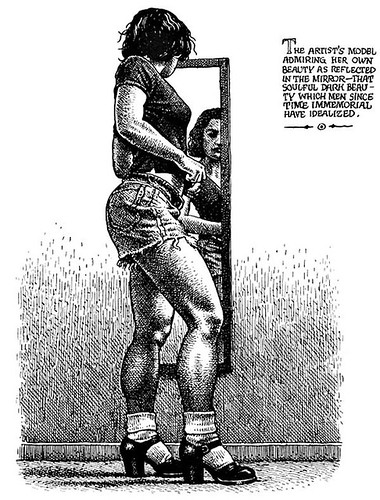 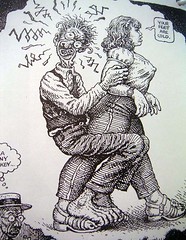 Robert Crumb at The Yerba Buena Center for the Arts The true anti- hero when talking about the good old american ideals, Robert Crumb doesn’t exactly defend the land of the free and the home of the brave. Father of the underground comics movement, he revolutionized the illustration world and never doubted to put his finger where it hurted the most. Totally ignored by the comic book publishing industry he decided to take matters into his own hands creating a whole new language, an unforeseen universe. Satire, politics and a lot of sex made Crumb a problem for the institutions. After more than 30 years the creator of Fritz the Cat has, finally, decided to cooperate and lets the mainstream peek into his world filled with strange “dangerous” characters that will fill everyone’s mind with bad intentions. Robert Crumb makes us see that there are many ways to fight the power, he teaches us to, simply, say no to an elitist society, a corrupt reality. Once again The Yerba Buena Center for the Arts is to blame for making good curatorial choices and so for having the honor of presenting the work of a master that feeds himself on the underground world, a reality that always seems to be just around the corner. 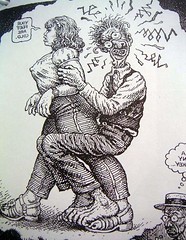 Text by Ana Neto -oOo-oOo-oOo- El tema de la 'conyugalidad constitutiva' de la pareja humana es tan fundamental, que no hay obra ni artística, ni histórica, ni social, ni filosófica, ni teológica donde pueda faltar sin menoscabo. La ausencia de este tema en cualquiera de estas obras revela que su Autor ignora el hecho más importante de la condición humana y que, por consiguiente, la obra en cuestión no merece ser considerada como una contribución fundamental al humanismo. -oOo-oOo-oOo-  Genesis In 2009, Crumb published his illustrated graphic novel version of the Book of Genesis. The book includes annotations explaining his reactions to the stories. It is reported on NPR in October 2009, that it was a four-year effort and does not rewrite any part of the text. Much research was done by Mr. Crumb in the earlier language versions of the text to support the interpretations. It contains all fifty chapters of Genesis and comes with a warning on its cover: "Adult Supervision Recommended for Minors." Wikipedia  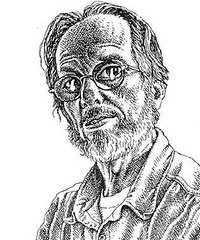 Crumb’s GENESIS makes waves and appearances Crumb’s GENESIS makes waves and appearancesMEANWHILE, Crumb’s literal and thoughtful take on the Book of Genesis is getting a lot of attention from secular and religious news outlets alike. Alas for those spoiling for a fight, most reviews have been measured. The kudos for this book are also coming in from other quarters— Rev. James Martin, a Jesuit priest and chronicler of pop culture thinks Crumb is successfully translating the Bible into a new medium. And even Robert Alter (with or without his ego) well known for his rendering of The Five Books of Moses endorses the project. Crumb actually based what he did in part on the translations of Alter. For example Jacob’s ladder becomes Jacob’s ramp in Alter’s translation, and Crumb follows the latter, rather than the former, in his drawing. "Es imposible no ofender a aquellos que quieren ser ofendidos" 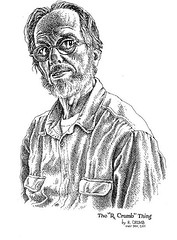 Robert Crumb : No sé por qué es tan extraño. Yo ya había trabajado en bastantes adaptaciones de autores clásicos, como Kafka, pero no tengo una razón definida para haber hecho el Génesis. Es un libro que me atraía y el reto de ilustrarlo me parecía divertido. he published Dibujarlo podía ser una forma de probar mis capacidades. Robert Crumb : No sé por qué es tan extraño. Yo ya había trabajado en bastantes adaptaciones de autores clásicos, como Kafka, pero no tengo una razón definida para haber hecho el Génesis. Es un libro que me atraía y el reto de ilustrarlo me parecía divertido. he published Dibujarlo podía ser una forma de probar mis capacidades.Cuanto más fanáticos, más ofendidos se pueden sentir, porque entienden la Biblia como una especie de libro secreto intocable. Pero yo no he intentado ni he buscado ridiculizar o parodiar a la religión, he sido muy respetuoso y lo he hecho lo mejor que he podido, intentando plasmar el texto fielmente. Pero no creo que sea un libro sagrado o la palabra de Dios, creo que es la palabra de los hombres. Supongo que es imposible no ofender a aquellos que quieren ser ofendidos. No sé, a lo mejor tendría que tener cuidado por si alguien quiere matarme a partir de ahora... No sé cómo será en castellano, pero los que hablamos inglés crecimos con la versión de King James, donde se usa ese lenguaje ceremonioso y arcaico que da la sensación de un gran secreto compartido. La traducción de Robert Alter me permitió acercarme más al original Es así porque así está en el libro", dice Crumb. "En el principio del Génesis la representación es muy humana, un Dios que se relaciona con el hombre, pero a medida que avanza el libro, se va transformando, pasa a ser una voz atronadora en los cielos o incluso termina por aparecer sólo en los sueños, haciéndose cada vez más y más lejano al hombre. Fue muy difícil lograr la forma final que le daría a Dios, lo dibujé muchísimas veces. No sabía si hacerlo de la forma clásica o nuevo, un negro, una mujer o un marine...", Afortunadamente hoy no tiene esa lectura, aunque haya Estados que siguen usando a Dios exactamente igual que se usaba hace siglos, como excusa para imponer unas ideas, pero emplearlo como un texto sagrado y vivir literalmente según el texto, es de locos Sí, he tenido que hacer un trabajo muy enfocado en la anatomía humana, en la documentación", comenta, "he sido muy crítico con mi propio trabajo y he repetido muchísimos dibujos, pero creo que puedo decir que con este trabajo he mejorado mucho mis habilidades artísticas. Casi he tenido que volver a aprender a dibujar, demostrando que soy capaz de hacerlo. La ventaja del lenguaje del cómic es que sintetizar es uno de sus elementos básicos, y dibujar cómics desde hace cuarenta años me ha ayudado en escenas tan complejas como las de las listas de generaciones Cuando comencé la adaptación pensaba que era un reto atractivo, que lo podría hacer en unos meses. Ahora tengo claro que, definitivamente, ésta es mi única y última obra sobre la Biblia, el resto se lo dejo a otros. He acabado completamente agotado, casi enfermo. ¡Incluso he llegado a pensar en no volver a dibujar jamás!. Fuente: ENTREVISTA: ROBERT CRUMB Autor de cómic "Es imposible no ofender a aquellos que quieren ser ofendidos" ÁLVARO PONS - Valencia - 26/11/2009 Autorretratos de Robert Crumb, hechos en 1998, el primero, y en 2001, el segundo 26/11/2009 Archivado en Antropología conyugal, Arte, Religiones, Pintura |
sábado, noviembre 28, 2009
Crumb ilustra el libro del Génesis
Suscribirse a:
Enviar comentarios (Atom)
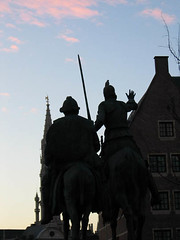
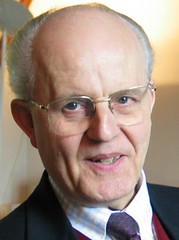
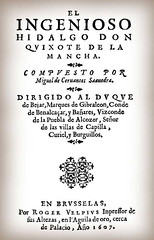

No hay comentarios:
Publicar un comentario